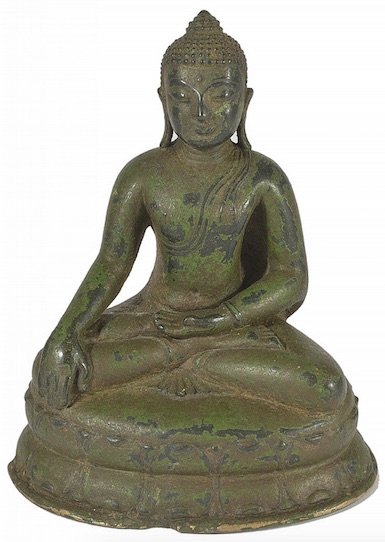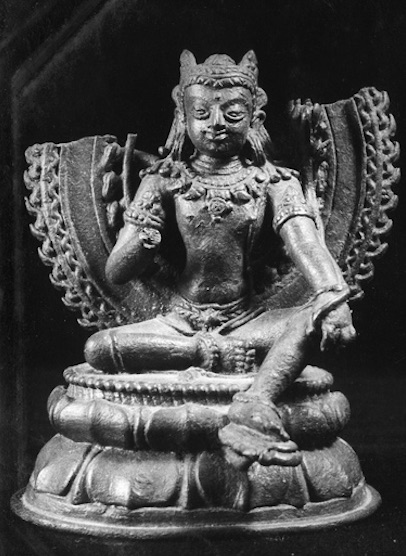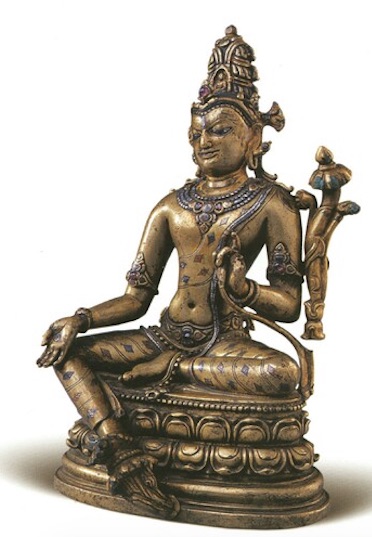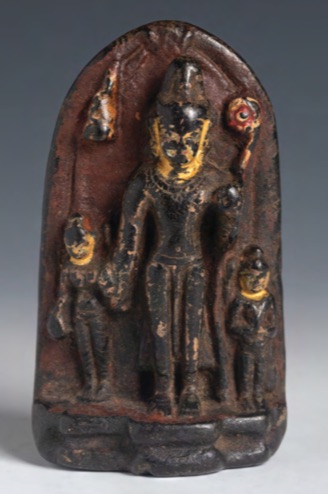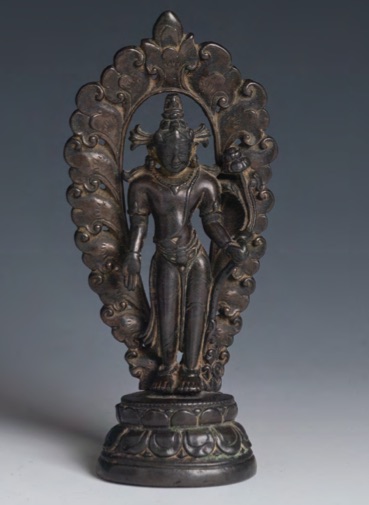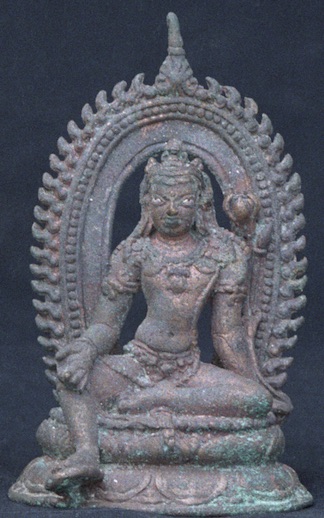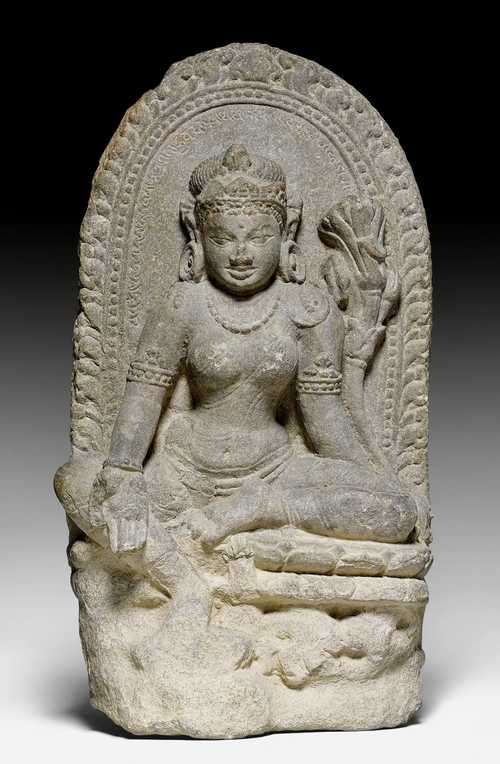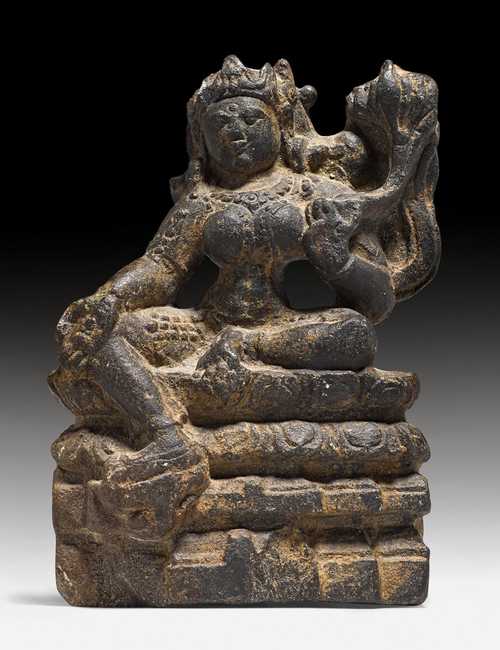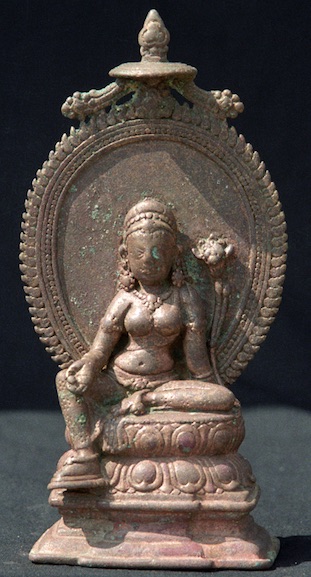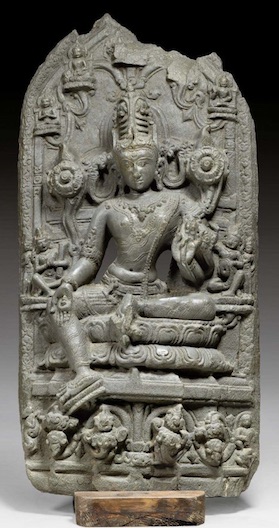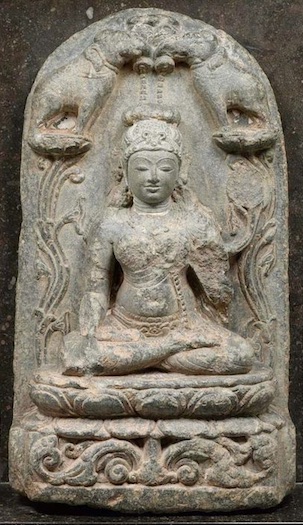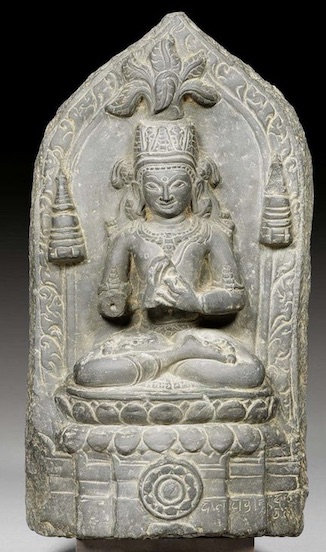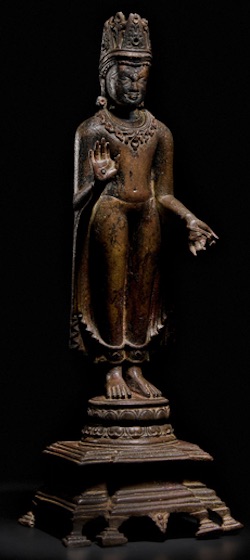
11th century, Northeastern India, Kurkihar, The Crowned Buddha, copper alloy with silver inlay, 43,2 cm, Indian, Himalayan and Southeast Asian Art lot 764, photo and extensive notes by Sosi Mehren on Bonhams
From a series of standing Crowned Buddha portable sculptures made in the state of Bihar during the late Pala Period, this work still has the ‘tortoise’ pedestal (representing a yantra) that supports the lotus base; the one-piece flaming halo topped with a parasol is now missing. On all the examples we have seen so far Shakyamuni makes the fear-allaying gesture with his right hand and holds a piece of his garment in the other.

11th-12th century, Northeastern India, The Eight Great Events, stone, 10,3 cm, private collection, Indian and Himalayan Art lot 824, 21st March 2024, Sotheby’s

11th-12th century, Eastern India, Scenes from the Life of the Buddha, stone, private collection, Indian, Himalayan and Southeast Asian Works of Art lot 754, 16th March 2016, Sotheby’s
We saw a similar stele from the Potala Collection in Lhasa (Buddhist Sculptures in Tibet Volume One by Ulrich von Schroeder, Visual Dharma Publications, Hong Kong, p. 401 pl. 129C) depicting the eight great events in the life of the Buddha: his birth, his first sermon, the taming of the elephant, the miracle at Sravasti, his descent from the Trayastrimsha heaven, the presentation of honey by the monkey, his death (always at the top) and the moment of his enlightenment (always at the centre of the stele). On these two examples his lotus throne is supported by two naga kings.
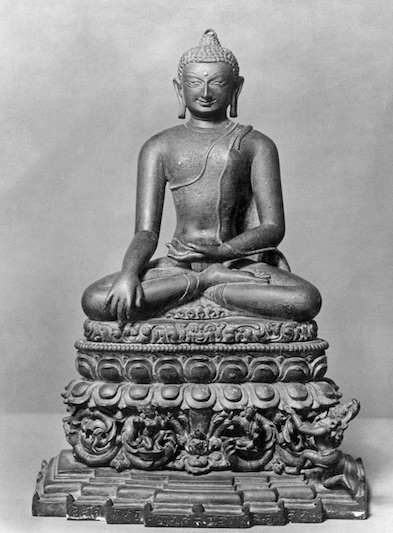
Pala Period, Northeastern India, found at Fatehpur, Shakyamuni, bronze, 27,8 cm, formerly in the Bodh Gaya Site Museum, sadly stolen in 1981, photo by the American Institute of Indian Studies, Gurgaon, in an article by Janice Leoshko (Fig. 8) on University of Michigan
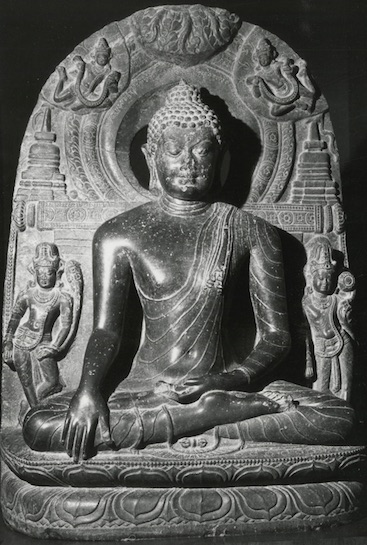
9th century, India, Bodhgaya, the Buddha attended by Avalokiteshvara and Maitreya, (stone), photo by Janice Leoshko, 2007, in the above-mentioned article (Fig. 6), at the Patna Museum (India).
Avalokiteshvara, identified by the effigy of Amitabha on his head and the open lotus in his left hand, stands to the left of the Buddha. Maitreya, on the other side, has a stupa between his low tiara and his topknot and he holds a bunch of flowers, probably from a naga tree (mesua ferrea).
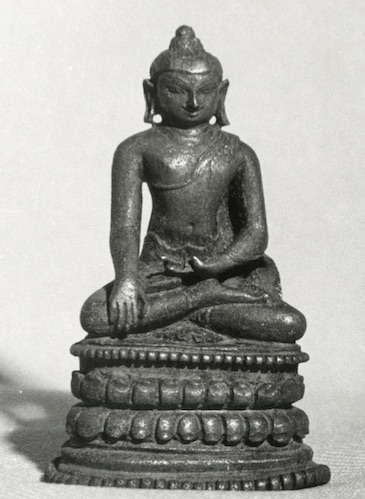
Circa 11th-12th century, India, Buddha, found at Antichak, Bihar, photo by Janice Leoshko as before (Fig. 7), 1987, at the Archaeological Survey of India Office in Patna (India).



